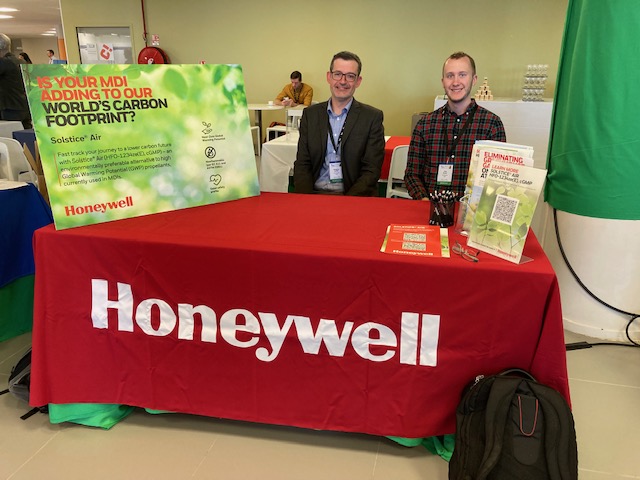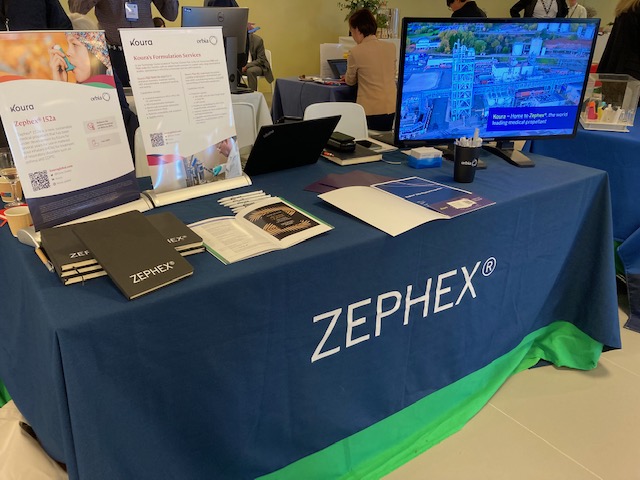In addition to Honeywell and Koura, Aptar Pharma also addressed reformulation with the new propellants in its workshop on “Accelerating And De-risking The Development Of Low Global Warming Potential (GWP) pMDIs.” In 2019, Aptar acquired Nanopharm, which performed early testing on 152a for Koura (then Mexichem), and Aptar’s workshop heavily promoted Nanopharm‘s inhalation expertise.
Other companies presenting talks and posters on the lower-GWP propellant transition included Kindeva Drug Delivery, which has recently installed lower-GWP propellant manufacturing lines; Recipharm, which offers reformulation services for the new propellants; Proveris Scientific; OzUK; and Team Consulting.
In the “Building a Sustainable Future” session, Loy Britto of Healthy Airways observed that, “Things are moving, and they are moving forward very quickly” with the transition to new propellants compared to the previous transition. He attributed that acceleration in part to the fact that propellant and component suppliers are leading the way this time and in part to the availability of harmonized product specific guidelines from the FDA and EMA. The availability of some guidance differs from the CFC to HFA transition, he said, when “companies were sort of meandering their way through in terms of exactly what were the regulatory authorities looking for.” In order to meet the accelerated timelines of this transition, he warned, developers need to perform certain tasks as soon as possible to avoid delays down the road.
In particular, he cited characterization studies such as extractables and leachables, priming and re-priming, and patient simulated use testing as crucial to complete as soon as possible. Britto also reminded delegates that process variables might differ considerably from pilot scale to commercial scale and he recommended engaging with a Notified Body as required by the new EU Medical Device Regulation (MDR) as soon as possible.
Regulators and the new propellants
Geraldine Venthoye of Vectura asked Britto for his thoughts about formulating improved MDI products with the new propellants given the short time frame and potential FDA requests for clinical data if there are any deviations from the reference product. Britto responded that while he thinks it is admirable for people to want to take the opportunity to make the product better from a clinical perspective, “There is very little opportunity to improve the product . . . the regulators are saying they want it to be as close as possible, and that’s how all of these guidelines are written, to minimize the differences between your test and reference product.”
While Britto expressed confidence during his talk about the ability of available regulatory guidelines to speed up the transition to lower-GWP propellants if developers do in fact minimize differences between the test and reference product, some delegates throughout the meeting questioned why regulators have yet to provide any guidance specifically related to the new propellants.
Following a presentation by the FDA’s Bryan Newman at the very end of the scientific program, Britto offered Newman the chance to clarify what additional data the agency would require for approval if the guidelines are followed and safety data demonstrates no impact from the propellant switch. Newman’s answer: “At the moment the types of information that might be needed for either a new drug that is utilizing a low global warming potential or for a generic, these are being discussed internally, and very active discussions are going on to identify the most appropriate ways to go about and do this.”




